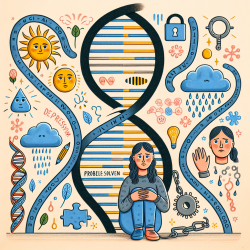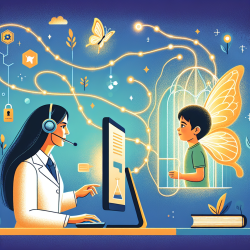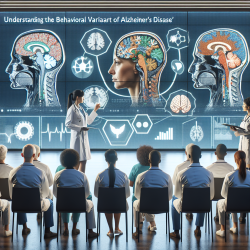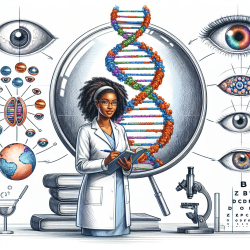Introduction
In the realm of speech-language pathology, understanding the multifaceted nature of child development is crucial. Recent research, such as the study titled A catalogue of omics biological ageing clocks reveals substantial commonality and associations with disease risk, provides groundbreaking insights into biological ageing and its implications for health outcomes. This research can inform and enhance our practice by offering a more nuanced understanding of developmental trajectories in children.
Understanding Omics Biological Ageing Clocks
The study by Macdonald-Dunlop et al. explores the concept of biological age (BA) as opposed to chronological age (chronAge). Biological age is a measure of functional capacity and health prognosis that can vary significantly among individuals of the same chronological age. The research compares various omics biological ageing clocks, which use different biomarkers to estimate BA. These clocks include DNA methylation, glycomics, proteomics, and more, each offering unique insights into the ageing process.
Implications for Speech-Language Pathology
As practitioners, integrating the concept of biological age into our assessments can lead to more personalized and effective interventions. Here are some ways this research can be applied:
- Personalized Intervention Plans: By understanding a child's biological age, speech-language pathologists can tailor interventions to align with the child's functional capacity rather than their chronological age.
- Early Identification of At-Risk Children: Omics clocks can help identify children who may be at risk for developmental delays, allowing for earlier and more targeted interventions.
- Monitoring Progress: Tracking changes in biological age over time can provide a more dynamic measure of a child's development and the effectiveness of interventions.
Encouraging Further Research
The integration of omics biological ageing clocks into speech-language pathology is still in its nascent stages. Practitioners are encouraged to engage with this research actively, exploring how these concepts can be further refined and applied within the field. Collaborating with researchers and participating in studies can contribute to a deeper understanding of how biological age impacts language development and other cognitive functions.
Conclusion
The study by Macdonald-Dunlop et al. provides a compelling case for considering biological age in clinical practice. By leveraging data-driven insights, speech-language pathologists can enhance their practice, leading to better outcomes for children. For those interested in delving deeper into the research, the original paper offers a wealth of information on the methodologies and findings of omics biological ageing clocks.
To read the original research paper, please follow this link: A catalogue of omics biological ageing clocks reveals substantial commonality and associations with disease risk.










